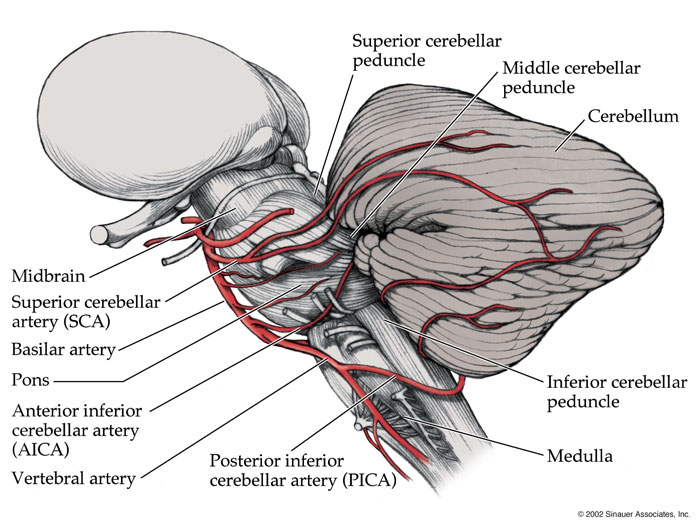Page Contents
VESSEL PATHWAY
The posterior inferior cerebral artery (PICA) is a branch of the vertebral artery.
Aorta → Brachiocephalic (right side only) → Subclavian → Vertebral → PICA

FUNCTION
The PICA artery will perfuse the lateral portion of the medulla (brainstem and the posterior cerebellum.
Medullary structures perfused by the PICA include: the nucleus and descending tract of the fifth nerve, the nucleus ambiguus, lateral spinothalamic tracts, inferior cerebellar peduncle, descending sympathetic fibers, vagus, and glossopharyngeal nerves.
CAUSES OF INJURY
Occlusion can be caused by thrombosis or embolism, however other causes such as syphilitic arteritis and vertebral artery dissection are also possible.
CLINICAL PRESENTATION OF INJURY
Wallenberg Syndrome (Lateral Medullary Syndrome) is caused by an occlusion in the PICA artery.
- Symptoms include: vomiting, vertigo, nystagmus, pain and temperature sensation from ipsilateral face and contralateral body, dysphagia, hoarseness, diminished gag reflex, ipsilateral Horner syndrome; ataxia, dysmetria.
- Nucleus ambiguus effects are specific to PICA lesions: issues with speech and swallowing are very suggestive of a PICA artery occlusion (as this artery is the sole blood supply to the Nucelus ambiguus).
OTHER INFO
Page updated: 06.19.2016